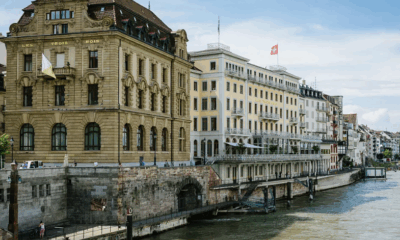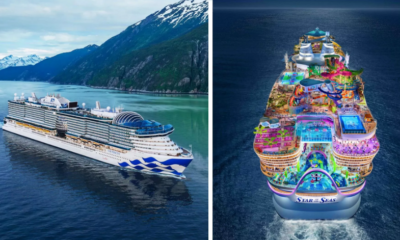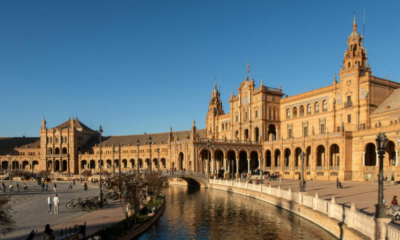Travel
Top Destinations for Day and Weekend Trips from Barcelona by Train
While Barcelona remains one of Spain’s most visited cities, its growing popularity has led to concerns about mass tourism, with protests against overcrowding becoming more frequent. Fortunately, there are plenty of scenic and culturally rich destinations just a short train ride away, offering a chance to escape the crowds while enjoying Spain’s diverse landscapes and heritage.
Here are some of the best day and weekend trips from Barcelona, all accessible via public transport.
Explore Dalí’s Surrealist World in Figueres
Art lovers can take a fast train to Figueres in under an hour to explore the works of surrealist master Salvador Dalí. The Dalí Theatre Museum, home to more than 1,500 of his pieces, is a must-visit for those interested in his unique artistic vision.
For a deeper insight into Dalí’s life, visitors can explore Casa Natal Salvador Dalí, his birthplace, which opened to the public in 2023. Those with extra time can venture to Cadaqués, a picturesque coastal town where Dalí’s summer home in Portlligat is located. The surrounding Cap de Creus Natural Park offers hiking trails through landscapes that inspired his artwork.
Savor Wine and Cava in the Penedès Region
Wine enthusiasts can hop on a 90-minute train ride southwest to the Penedès wine region, known for its stunning vineyards and world-renowned cava production.
The town of Sant Sadurní d’Anoia, Spain’s cava capital, offers tours and tastings at historic wineries like Freixenet and Codorníu. For a more immersive experience, visitors can rent an e-bike from Bikemotions, located at Lavern-Subirats station, and cycle through rolling vineyards, stopping at wineries along the way.
Discover Modernista Architecture in Reus
For architecture enthusiasts looking beyond Barcelona’s well-known Modernista buildings, Reus offers a quieter and more affordable alternative. Located two hours by train from Barcelona, the town is the birthplace of Antoni Gaudí, though his architectural influence is not present there.
Instead, Reus boasts stunning works by Lluís Domènech i Montaner, including Casa Navàs with its intricate stained glass and ornate designs, and L’Institut Pere Mata, a hidden gem of Modernist architecture.
Stroll Through the Historic Streets of Girona
Just 38 minutes by high-speed train, Girona is a perfect blend of medieval charm and modern vibrancy. The city’s Barri Vell (old town) features narrow streets, stone staircases, and a stunning Jewish Quarter, offering a glimpse into Spain’s medieval past.
Famous for its Game of Thrones filming locations, Girona remains a peaceful retreat even on weekends. Visitors can enjoy the colorful riverside houses along the Onyar River, explore the imposing Girona Cathedral, and walk along the city’s ancient walls for panoramic views.
Escape to the Pyrenees in Vall de Núria
For those seeking a weekend retreat in nature, Vall de Núria in the Pyrenees is an ideal getaway. A two-hour, 40-minute train ride to Ribes de Freser, followed by a historic rack railway journey, takes visitors over 1,000 meters into a breathtaking valley surrounded by towering peaks.
In winter, the area offers skiing and snowshoeing, while summer brings hiking trails through lush mountain landscapes. Accommodations are available at the sole hotel in Vall de Núria, with additional options in Ribes de Freser.
Hike Through Collserola Natural Park
For a quick escape into nature without leaving the city, Collserola Natural Park is a great option. Located just above Barcelona, it offers numerous hiking trails suitable for all levels.
Easily accessible via public transport, Collserola provides a tranquil retreat from the city, making it perfect for a half-day or full-day hike.
A Sustainable Way to Explore Catalonia
With efficient train connections to these destinations, travelers can enjoy Catalonia’s cultural and natural treasures while minimizing their environmental footprint. Whether seeking art, architecture, wine, or outdoor adventure, these trips offer the perfect escape from Barcelona’s bustling streets.
Travel
Basel Prepares to Host Eurovision as Fans from 80 Countries Arrive
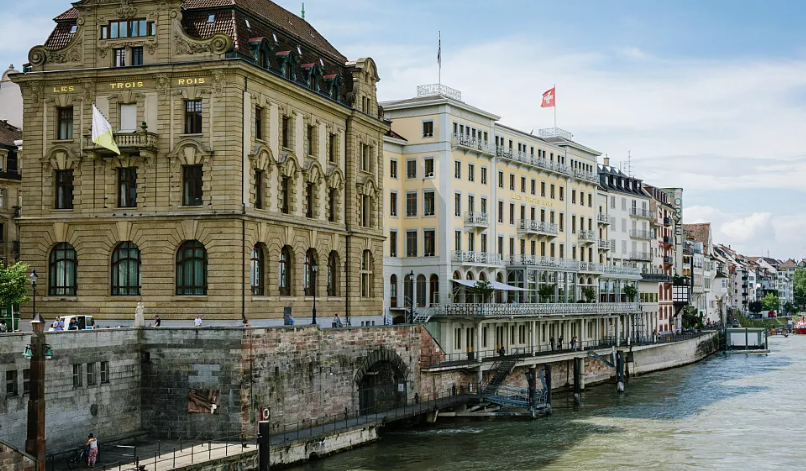
The city of Basel is set to take centre stage next week as it hosts the 69th edition of the Eurovision Song Contest. From 13 to 17 May, 37 countries will compete at the St. Jakobshalle arena, drawing tens of thousands of visitors and turning the Swiss city into a global hotspot for music and celebration.
This year marks the first time Switzerland has hosted the contest since 1989, and anticipation is running high. Organisers report that fans from 80 different countries will be present for the live shows, with a total crowd of up to 50,000 expected to arrive in the coming days.
Swiss fans have purchased the highest number of tickets, eager to welcome the event back home. Germany follows closely behind, with large contingents also coming from the United Kingdom, France, and Spain. The contest remains a powerful draw across Europe and beyond, known for its extravagant performances and electric atmosphere.
As the city prepares for the influx, accommodation prices have surged dramatically. An analysis by sports news outlet Wettfreunde.net, which examined over 1,000 listings on Booking.com and Airbnb, reveals steep increases in lodging costs during the contest week.
For a six-night stay from 12 to 18 May, Booking.com listings average €6,024 — a 139% jump compared to the week before and a 137% rise over the week after. Airbnb prices are also up significantly, with an average cost of €1,804, representing a 130% and 164% increase respectively.
Some listings have reached eye-watering levels. The most expensive property on Airbnb is a loft just 2.5 kilometres from the venue, priced at €67,369 for six nights. On Booking.com, a studio apartment eight kilometres from the arena is listed at €21,906 for the same period.
Despite the soaring rates, budget options do exist — though they remain costly by regular standards. The cheapest available room on Booking.com is a double in a capsule hotel near the venue for €1,178, while Airbnb’s least expensive listing is a €252 apartment located 30 kilometres away.
With the stage nearly set, Basel is bracing for a week of music, spectacle, and international flair as Eurovision fever sweeps the city once more.
Will you be tuning in to the contest or following the excitement from afar?
Travel
Rome Braces for Travel Disruptions Following the Death of Pope Francis

Travellers to Rome over the coming weeks should expect significant disruptions and closures at some of the city’s most iconic religious sites following the death of Pope Francis on April 21.
The Vatican confirmed that Pope Francis, born Jorge Mario Bergoglio in Argentina, died on Monday after suffering a stroke that led to a coma and subsequent heart failure. His passing has set in motion a series of deeply traditional rituals, including a funeral, public mourning, and the election of a new pope.
Among the immediate impacts is the closure of the Sistine Chapel, which will be used exclusively by the College of Cardinals for the conclave—the secretive process to elect the next pope. The Vatican announced the chapel will close to the public from April 28 and remain inaccessible until several days after the conclave concludes, likely reopening in mid-May.
Other nearby attractions will also see changes. The Vatican Museums will remain open except for April 26, when they will close to honor the Pope’s funeral. However, access to the Sistine Chapel will be suspended, and security will be tight throughout Vatican City. Tours of the Vatican Gardens and the Necropolis of the Via Triumphalis are also suspended due to increased security measures as cardinals travel between the chapel and their accommodations.
St. Peter’s Basilica is currently hosting thousands of mourners, with the late pontiff’s body lying in state until April 25. Public access is possible from 7 a.m. to midnight on April 24, and from 7 a.m. to 7 p.m. on April 25. However, long queues and strict dress codes are in place. Parts of the basilica, including the dome, are closed to visitors, and all guided tours are suspended.
The Pope’s funeral is scheduled for April 26 at St. Peter’s Square and is expected to draw millions. Hotel and flight prices have already begun to climb in anticipation of the influx of visitors, many of whom are traveling to witness what is considered a historic and spiritual milestone.
Following the funeral, attention will turn to the election of the new pope. Tourists and faithful can witness the traditional smoke signals from the Sistine Chapel chimney—black indicating no decision, and white signaling that a new pope has been chosen. Crowds are expected to gather in large numbers in St. Peter’s Square for this moment.
While some visitors may be disappointed by limited access to key religious sites, others are embracing the rare opportunity to witness the Vatican during a pivotal moment in modern Church history.
Travel
Travel Industry Faces Scrutiny Over Website Accessibility Failures
-

 Business12 months ago
Business12 months agoSaudi Arabia’s Model for Sustainable Aviation Practices
-

 Business12 months ago
Business12 months agoRecent Developments in Small Business Taxes
-

 Politics12 months ago
Politics12 months agoWho was Ebrahim Raisi and his status in Iranian Politics?
-

 Business11 months ago
Business11 months agoCarrectly: Revolutionizing Car Care in Chicago
-
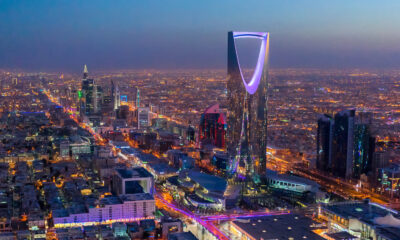
 Business11 months ago
Business11 months agoSaudi Arabia: Foreign Direct Investment Rises by 5.6% in Q1
-

 Technology12 months ago
Technology12 months agoComparing Apple Vision Pro and Meta Quest 3
-

 Politics12 months ago
Politics12 months agoIndonesia and Malaysia Call for Israel’s Compliance with ICJ Ruling on Gaza Offensive
-

 Sports10 months ago
Sports10 months agoKeely Hodgkinson Wins Britain’s First Athletics Gold at Paris Olympics in 800m

